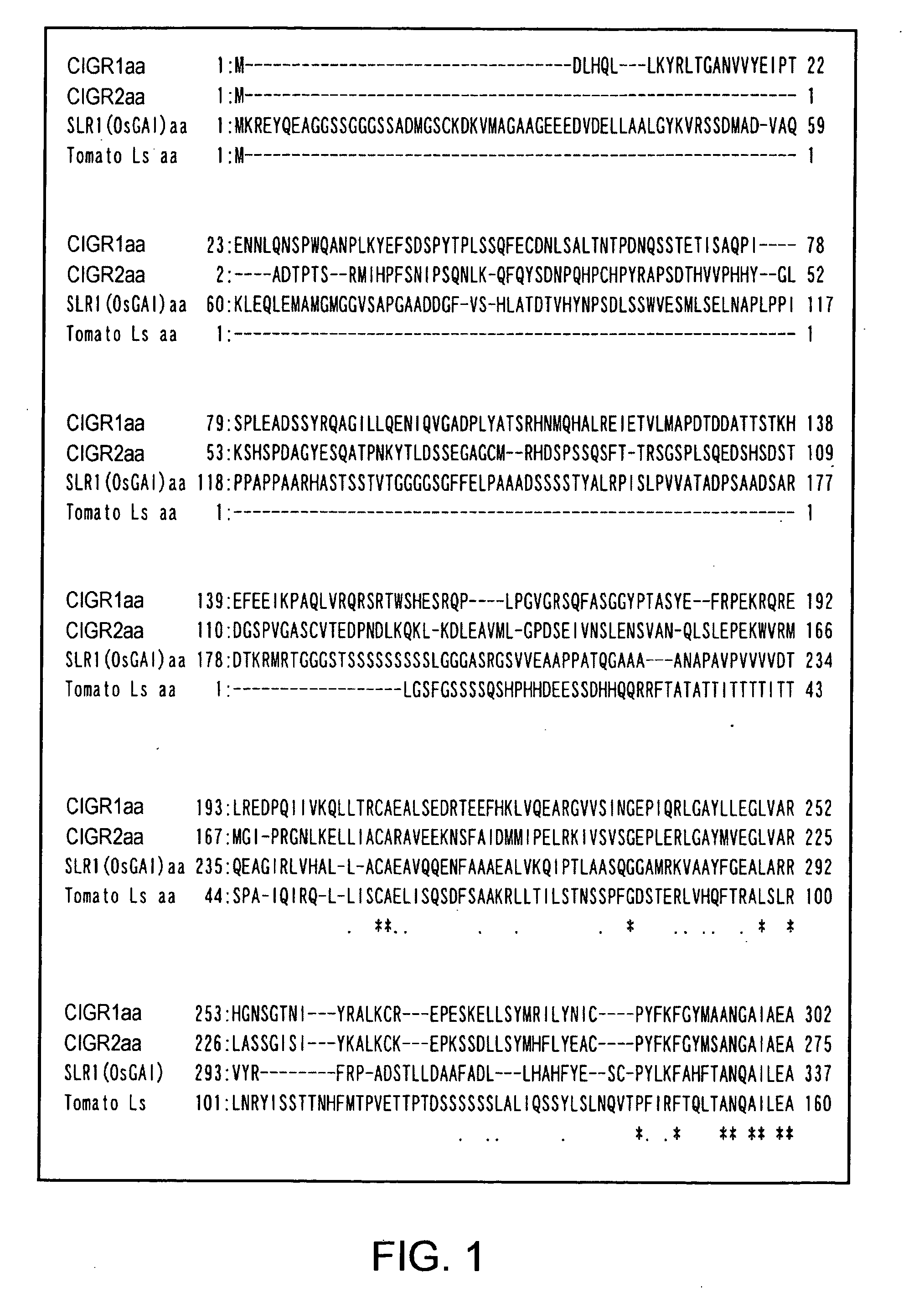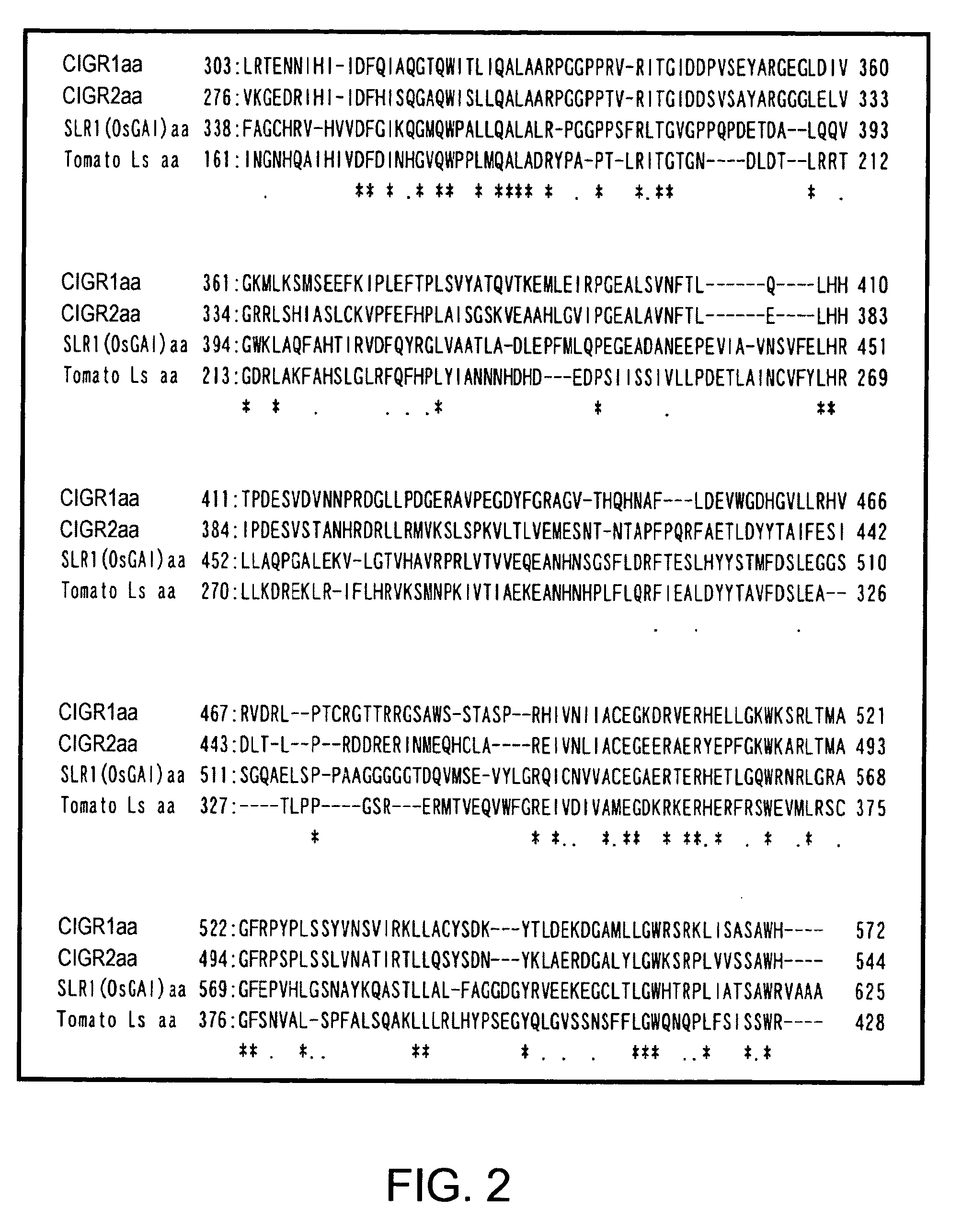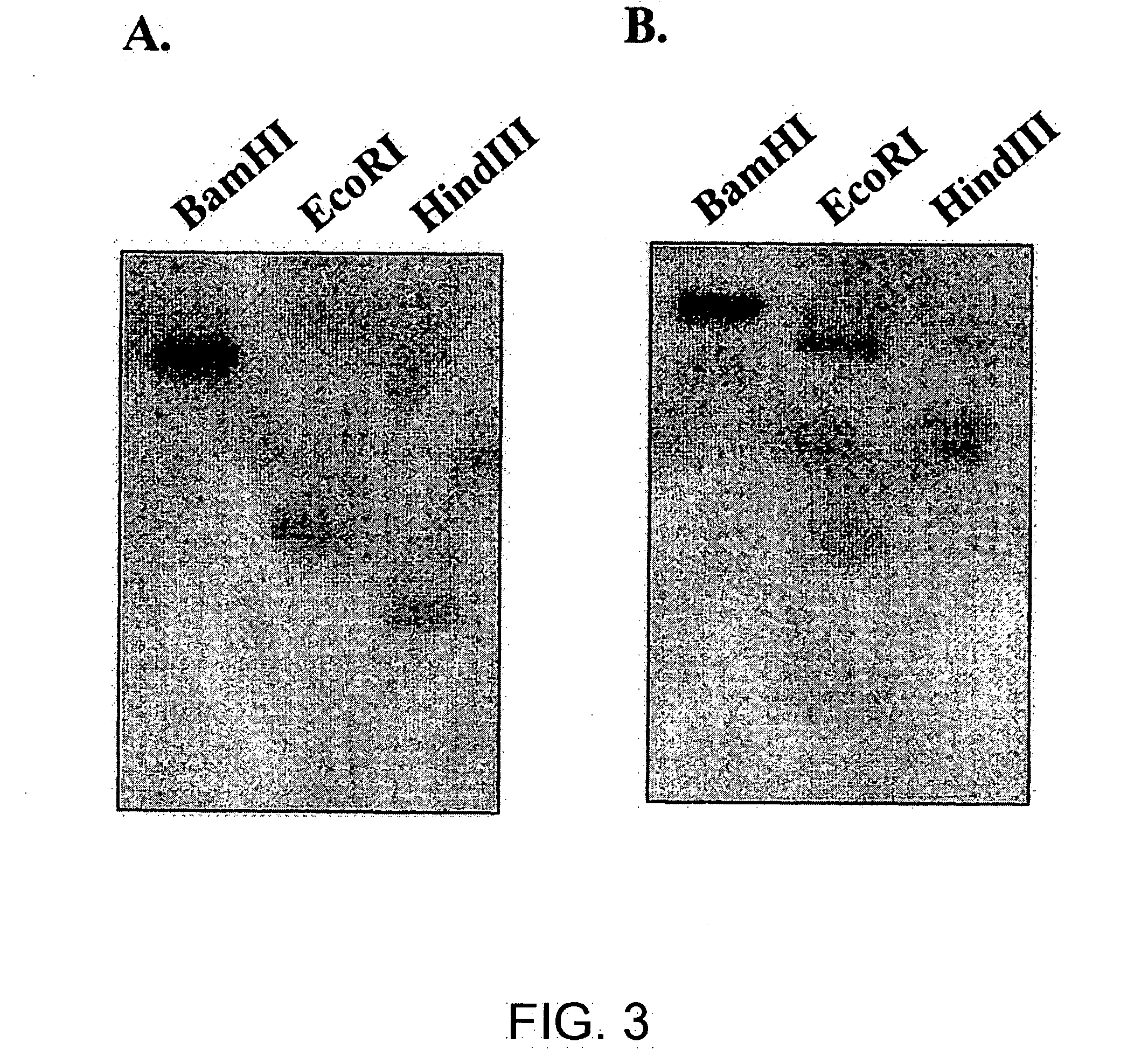Chitin oligosaccharide elicitor- and gibberellin-responsive genes in plants, and uses thereof
a technology of chitin oligosaccharide and gibberellin, applied in the field of plant elicitorand gibberellinresponsive genes, to achieve the effect of suppressing the expression of that gene, reducing the activity of ribozyme, and reducing the effect of ribozyme activity
- Summary
- Abstract
- Description
- Claims
- Application Information
AI Technical Summary
Benefits of technology
Problems solved by technology
Method used
Image
Examples
example 1
[0091] Of the rice GRAS family members, genes regarded as gibberellin signal repressors (SLR and OsGAI genes) were recently reported (Ogawa, M., Kusano, T., Katsumi, M., and Sano, H. “Rice gibberellin-insensitive gene homolog, OsGAI, encodes a nuclear-localized protein capable of gene activation at transcriptional level.”, Gene, 2000, 245, 21-29; Ikeda, A., Ueguchi-Tanaka, M., Sonoda, Y., Kitano, H., Koshioka, M., Futsuhara, Y., Matsuoka, M., and Yamaguchi, J. “slender rice, a constitutive gibberellin response mutant, is caused by a null mutation of the SLR1 gene, an ortholog of the height-regulating gene GAI / RGA / RHT / D8.”, The Plant Cell, 2001, 13, 999-1010). Two MAFF Genebank ESTs (c72495 and AU094860) that showed significantly increased signals on DNA microarrays after a 15-minute elicitor treatment were obtained from the Ministry of Agriculture, Forestry and Fisheries (MAFF) Genebank, and their entire nucleotide sequences were determined. Their deduced amino acid sequences were c...
example 2
[0093] The products of the genes of the GRAS family are regarded as transcriptional regulators, but it is not known how they are involved in the regulation of gene expression. Arabidopsis SCARECROW does not have the typical nuclear localization signal. However, it is estimated to be a transcription factor because its N-terminal region is rich in serine, threonine, proline, and glutamine. GAI gene, which is one of the Arabidopsis gibberellin signal repressors, and GRS gene very similar to that, have nuclear localization signal-like sequences (Peng, J., Carol, P., Richards, D. E., King, K. E., Cowling, R. J., Murphy, G. P., and Harberd, N. P., Genes and Development (1997) 11, 3194-3205). Furthermore, RGA, which is another repressor, was shown to be localized in the nucleus by experiments using a GFP-fusion protein (Silverstone, A. L., Ciampaglio, C. N., and Sun, T.-P., “The Arabidopsis RGA gene encodes a transcriptional regulator repressing the gibberellin signal transduction pathway”...
example 3
[0094] Both CIGR1 gene and CIGR2 gene were identified as elicitor responsive genes using DNA microarray analysis. The elicitor responsiveness of these two genes was analyzed using Northern blot hybridization method. Significant increases of mRNA amount were observed in both genes five minutes after treatment with chitin heptamer. Expression continued to increase for up to 90 minutes (FIG. 6a). It has been reported that the elicitor activity of chitin oligomers in rice depends on their size; that is, chitin heptamers and octamers have the strongest effects, and chitosan oligomers that are deacetylated derivatives have very low activities. Therefore, the present inventors studied the induction of expression of these two genes when the cells were treated by chitin oligomers, from monomer to heptamer, and chitosan oligomers, tetramer and heptamer. Both genes showed the strongest response to chitin heptamer. They had no significant response to chitosan oligomers (FIG. 6b).
PUM
| Property | Measurement | Unit |
|---|---|---|
| pH | aaaaa | aaaaa |
| temperature | aaaaa | aaaaa |
| nucleic acid | aaaaa | aaaaa |
Abstract
Description
Claims
Application Information
 Login to View More
Login to View More - R&D
- Intellectual Property
- Life Sciences
- Materials
- Tech Scout
- Unparalleled Data Quality
- Higher Quality Content
- 60% Fewer Hallucinations
Browse by: Latest US Patents, China's latest patents, Technical Efficacy Thesaurus, Application Domain, Technology Topic, Popular Technical Reports.
© 2025 PatSnap. All rights reserved.Legal|Privacy policy|Modern Slavery Act Transparency Statement|Sitemap|About US| Contact US: help@patsnap.com



